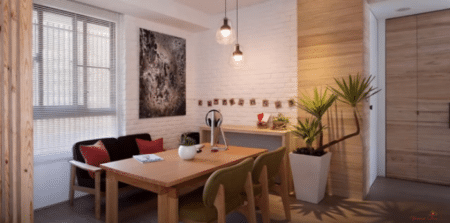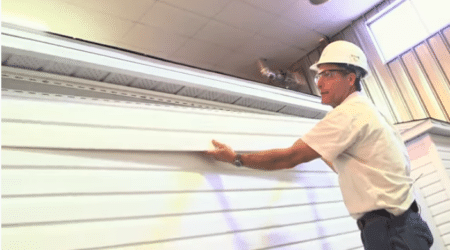Table of Contents
Vinyl siding has changed a lot over the past few decades. When Vinyl siding first appeared on the market, the choice was rather limited. Vinyl siding was then only offered in very few designs, thicknesses, and colors, which did not leave much room for creativity.
Now there are a large number of options, shapes, and colors possible, making it a smarter and more efficient product, which easily matches different styles of homes and better suits the tastes of homeowners. Vinyl siding is made from molded plastic resin and is available in horizontal and vertical variations. Vinyl siding is even possible, at a slightly higher cost, to choose for an isolated decline in polystyrene in order to obtain better insulation.

Vinyl siding is a highly valued material among homeowners for a number of reasons including its durability, longevity, and the low maintenance required to keep it in good condition. In addition, there are many color and pattern options on the market.
Before diving headfirst into this renovation project, it is important to think about the reasons why you choose vinyl siding. This includes selecting a color or style that suits your home. Vinyl siding is a great option for homeowners working on a small or medium budget. This is due to the fact that in the world of exterior or interior siding, it is one of the least expensive. Another major advantage of working with vinyl siding is that it will not need to be repainted after a few years. If you are looking for a low maintenance and inexpensive siding option, then vinyl siding might be for you.
If you are thinking of replacing your exterior or interior siding soon, vinyl siding is a good option to consider.

Advantages of vinyl siding
Vinyl siding has quickly become the number one choice in the whole world. The main attraction of this product is undoubted that its cost is much lower than that of any other type of house covering. In addition, it also has many other advantages, which you will find below:
1- Great variety
With the installing process of a vinyl siding we can reproduce almost any surface, finish and color. Thanks to advanced technologies, it is now possible to perfectly imitate the appearance and texture of natural surfaces such as stone, wood and slate.
2- Very comfortable
Soft and warm, vinyl is comfortable. In addition, it offers certain acoustic insulation, particularly reducing the noise.
3- Simple installation
Now vinyl siding is available in formats that are much easier to install. Whether in rolls, tiles or boards, vinyl siding coverings can be easily and quickly installed in any room of the house. The “quick” installation systems for vinyl siding are particularly simple to use.

4- Water resistant
The vinyl siding offers great resistance to water and makes it the material of choice for rooms such as the kitchen, bathroom, and basement and saves the walls damaging.
5- Easy maintenance
Vinyl siding is very easy to clean. From time to time, the material can be cleaned with warm water and a neutral detergent for more careful cleaning. But in general, a brush or vacuum cleaner is enough for regular maintenance of your vinyl siding.
6- Durable and easy to repair
To provide maximum durability, vinyl siding is made up of several layers, including a urethane wear layer for maximum resistance to scratches. It is recommended to keep a few extra sheets during installation because if damaged, vinyl siding is easy to replace.
7- Economic
Vinyl siding is generally a more affordable option than natural materials because its production costs are lower. In addition, the imitation of its surfaces is quite convincing.
The Vinyl siding also increases the beauty and value of your property while providing excellent value for money.
Here we have described the method, how to install vinyl siding?
How to install vinyl siding on exterior walls
Vinyl siding is widely used as a coating for the exterior walls of a house or other residential building, as its price is often lower than that of wood or brick.
The exterior coating is made to protect the materials of the house it covers. The price of vinyl is lower, and installing it is less expensive because you can do it quite easily yourself.

Some furs are installed during the construction of the frame walls to create an air gap between the frame and the cladding.
The Vinyl siding is easy to cut with an all-purpose knife, but also with a miter saw, the blade of which is very sharp. If the blade is dull, the panel can shatter.
The vinyl siding is attached to the roof framing with large head nails, usually like those used for installing asphalt shingles.
The installation is made from a starting molding, on which the strip is fitted, which is fixed in place to the timber. Then, the next one fits the previous one, which we nail … and so on. The slats are thus hooked and nailed to each other while going up to the gable of the roof.
The installation of the starting molding is critical, and it must be installed straight using a spirit level. Then, the most difficult is to measure and cut the slats to nest them on the outside wall.
The ends of the sheets enter a corner molding which is installed on the corners of the frame. J-moldings are installed around doors and windows to insert and hide the end of the vinyl slats.
The wall covering is installed by projecting higher in the cornices, in order to nail the top of the tabs securely in place. In this way, we simply add the J-molding which is used for laying the soffits, over the wall covering.
Making the installation of siding vinyl is easy to make oneself, one must simply know how to do. You have to take your time to measure correctly and do it correctly.
Gather materials, prepare the exterior of your home
Now, if you’ve decided to do the work yourself, we’ll start with the simple step of grouping the materials. The list of tools you will need is as follows:
- A measuring tape;
- A level;
- A hacksaw;
- An electric saw;
- A manual saw;
- A nail puller;
- Shears;
- A folding rule;
- A bracket;
- A self-locking tool;
- A crowbar;
- An easel;
- A scale.
In addition to this exhaustive list of tools, you will also need to gather materials for this job. This includes ” J ” moldings for soffits, flashing, construction paper, anti-corrosion nails as well as your vinyl siding. Vinyl corners and borders may also be required to cover windows and doors.
After gathering tools and materials and before starting the installation process, it is necessary for you to prepare the exterior surfaces of your house. If you have current problems with your house siding, it’s time to deal with it. You will need to repair any pressing issues, especially those related to moisture, as the vinyl siding tends to mask moisture issues. Loose or damaged panels will need to be replaced or tightened. If you notice that plants or trees are obstructing the area, do your best to set them back or tie them up without damaging them.
Attach vinyl siding to exterior walls
Begin this step by measuring the length of the walls. Start with the eaves and go straight to the surface below it. This will allow you to determine how many panels you will need for each wall. Divide the length of the wall by the width of a piece of siding. By taking this measurement, the ideal is to have a round figure.
If you don’t get a round number as the end result, you will need to leave gaps or cut pieces of a size to cover the entire wall. This will involve cutting the last piece of siding lengthwise to fill the vacant space. If you are cutting the last row of the covering, it will be necessary to shorten the length of the molding.
Once the amount of vinyl is determined, you will choose where to begin the installation of the exterior wall. Drive a nail into the chosen location and using a long ruler or measuring tape, draw a chalk line around the perimeter of the house. Above the line, you will need to nail a piece of plywood, which acts as a shelf to hold the first row of vinyl.
Then install the first strip on the plywood. Before installing the vinyl parts, you will need to secure the corners. Use your level, as it is crucial that these are completely straight before being fixed. Next, install the soffit molding around all of the windows and doors, allowing some space to allow the siding to move.
Finally, you can start installing the covering! Make sure good insulation is in place, this is important to keep your home at a comfortable temperature.
Once again, when installing your vinyl siding, be sure to leave some space for it to expand. Be sure to attach the bottom border of each panel below the starter strip. This should be attached using nails, centering the holes, and leaving space for movement.
If there are adjacent panels, these must overlap. Finish by installing the covering around the windows, the panels potentially needing to be cut to be put in place. Then install the first row of siding. The top border will need to be dragged below the border threshold. Here! You should have a brand new exterior capable of attracting admirers from near and far.
Vinyl siding in summary
As you have probably already noticed, vinyl is an excellent choice for exterior as well as interior siding. It is affordable, durable, and available in a multitude of options, which also makes it popular. Use good quality vinyl siding with an adequate minimum thickness to ensure that it performs its thermal protection functions well and that it does not need to be replaced in the medium term.
Before deciding on a type of exterior or interior siding, don’t forget to take into consideration your aesthetic tastes, the climate in which you live, the regulations of your municipality, the duration required, as well as your budget.
Choose a qualified contractor for vinyl siding installation
Need help with this project? Hire a contractor
This project can certainly be completed with the help of a friend or loved one, but hiring a contractor will guarantee that the work is done with precision and ease. This is especially true if you have not done this type of project before, installing vinyl siding requiring time, skill, and attention to detail. Even the most expensive or top-quality coating can warp if improperly installed. As a result, working with a contractor can extend the life of your siding.
Obviously, when it comes to hiring a contractor, there are several things to focus on.
Even if the installation of a vinyl siding is not very complicated; it still requires certain knowledge and a good level of expertise so that the installation is carried out properly.
The main purpose of exterior or interior siding is to protect your home. If the installation is not done according to the rules of the art, you leave room for possible water penetration problems, which could damage your home. So you have to find the best vinyl siding contractor in your industry, heaving their full installation tools.
It is recommended that you prefer at least three contractors to help you make an informed decision. And before making your choice, do not forget to validate among other things that he holds the appropriate licenses to perform this type of work, that his company does exist at the enterprise registrar (you will confirm at the same time his number of years existence), his previous clients are satisfied!!!